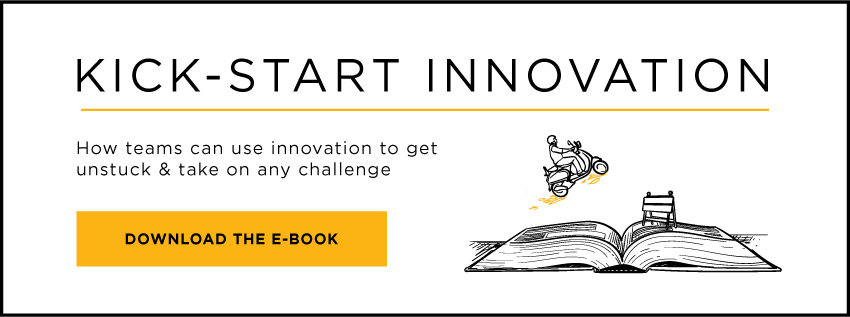You might think a bank branch has nothing in common with an Apple Store — and on the surface it doesn’t. But look a little closer through a more creative, design thinking lens, and you’ll see that banks can learn a lot from Apple’s retail outlets about how to create a more customer-centric environment.
If there’s one in your town, take a spin over there on a weekday morning. Nearby stores might be opening for the day, with a few scattered customers browsing here and there. But it’s a good bet the Apple Store will already have a waitlist for people to see staffers at its legendary Genius Bar.
For many years, Apple has been ranked as the most innovative company in the world. It has developed products that consumers love and a brick-and-mortar retail experience that has customers flocking to it instead of avoiding it. What does Apple know that other businesses don’t? From the beginning, they adopted design thinking — a process for creative problem solving that encourages organizations to focus on the people they're creating for — as a key competitive advantage in everything they do.
Here’s how they do it:
Customer-Centric Interaction. When a customer enters an Apple store, they are immediately approached by a greeter/scheduler/facilitator armed with an iPad who engages the customer and asks why they’re there. Need a repair? They’ll schedule it on the spot and take your cell number so you don’t have to hang around if there’s a long wait. You’ll be notified when you’re up in 15 minutes or so. Can’t make it? You can push the appointment back in 15-minute increments, reschedule completely or cancel.
Customer-Centric Selling. If you’re in the store to buy a new computer or other device, the greeter will pair you with a sales rep trained in the art of customer engagement. This knowledgeable Yoda-like guru will ask about your needs, what you’ll be doing with your device most often, and other questions designed to ferret out the exact right product for you. There’s no steering you to the most expensive model in the store. It’s completely about your needs.
Customer-Centric Education. Apple offers informal classes that teach customers the latest and greatest features of Apple products, tips and tricks, and how best to get the most out of that new computer you’re buying.
Customer-Centric Solutions. At the infamous Genius Bar, you can bring your devices that are on the fritz. Without Googling how-to articles and combing YouTube videos, your problems get solved on the spot, or at the minimum, you’re steered towards a solution to solve your issue.
Customer-Centric Purchasing. You’ll find no lines, no wait, no registers. If you want the device you’re looking at, your rep has an app to let you purchase it right there, immediately.
For Apple, everything is about their user or customer, and it is this singular focus that has allowed it to innovate and surpass any competition.
Why can't banks offer that same experience? They can. Just imagine:
-
A greeter to welcome customers, ask why they’re there and direct them to the appropriate kiosk, ATM or person.
-
A guru who can help customers with self-serve options like loan applications and account opening on the tablets positioned around the room.
-
A schedule of classes on topics like how to use digital banking, getting the most out of automatic bill pay, how to set up all the bells and whistles on the mobile app, and even general financial topics like how to save for retirement and still live well in the present, ways to get the most out of your paycheck, tactics for paying off debt.
-
Your bank’s version of the Genius Bar. Whether customers have trouble logging into their accounts, resetting passwords, suspicious activity on their accounts, and anything else related to the bank’s ever-increasing digital space, this will be the place to get those issues handled, both in the branch and online.
Design thinking strategies can help bank leaders shift their mindset about what branch experience should be to what it could be. When it’s all about being customer-centric or human-centered, they can begin to transform every branch into a thriving center that’s ready for the future of banking today.
Learn how to enable innovation skill-building at scale or download our free ebook Kickstart Innovation: A Guide for Organizations.
